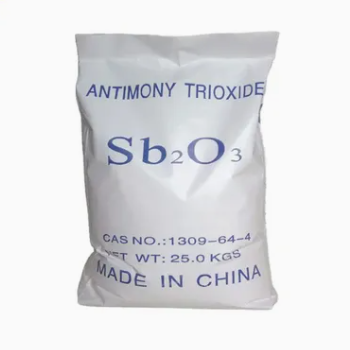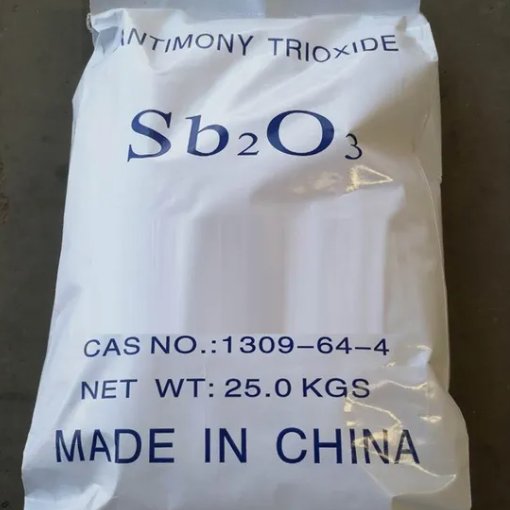Diantimony trioxide
 No. 45 Pengwan Road, Qianwan Bonded Port Area, Qingdao Area, China (Shandong)
No. 45 Pengwan Road, Qianwan Bonded Port Area, Qingdao Area, China (Shandong) Send me a request
Send me a request
Product Details & Description
Product Info
Chemical Identifiers
Product Info
Antimony trioxide, an inorganic compound with the chemical formula Sb2O3, is known in its natural form as stibnite and commonly referred to as white antimony. It appears as a white crystalline powder with a melting point of 655°C and a boiling point of 1550°C. It is soluble in concentrated hydrochloric acid, sulfuric acid, alkaline solutions, and hot tartaric acid solutions, and slightly soluble in water, dilute nitric acid, and dilute sulfuric acid. It is mainly used as a pigment, flame retardant, mordant, and catalyst, and can also be used in the synthesis of antimony salts.


1.It is used as a flame retardant for various resins, synthetic rubbers, canvas, paper, coatings, etc., and as a catalyst for petrochemicals and synthetic fibers. It is used for manufacturing mordants and opalescent agents, and is a raw material for synthesizing antimony salts. It is used as an additive in the enamel industry to increase the opacity and surface luster of enamel. It is used in the glass industry as a decolorizing agent to replace arsenite. Medicine, metallurgy, military industry, etc.
2.Antimony trioxide is an additive flame retardant and is often used in combination with other flame retardants and smoke suppressants. The components can produce a synergistic effect. In the early stage of combustion, antimony trioxide first melts and forms a protective film on the material surface to isolate air. Through internal endothermic reactions, the combustion temperature is reduced. At high temperatures, antimony trioxide is vaporized, diluting the oxygen concentration in the air and thus playing a flame-retardant role.
3. The commonly used polycondensation catalyst is approximately 0.03% in the polycondensation of ethylene glycol terephthalate. It is also used as a flame retardant for various resins, synthetic rubber canvas, paper, coatings, etc. Antimony trioxide is also a good covering agent and is used as a white paint pigment. It is used in the manufacture of mordants and opalescent agents, and is also a raw material for the synthesis of antimony salts. In the glass industry, it can replace arsenous acid as a decolorizing agent, etc.
4. It is used in fireproof coatings, pigments, enamel and glass industries, as well as in the preparation of potassium antimony tartrate. It is also used as a mordant.
Antimony trioxide is the earliest flame retardant to be applied and is suitable for epoxy resin, polyurethane, polystyrene, polyvinyl chloride, polyester, etc. When used alone, the flame-retardant effect is low. However, when used in combination with halogen compounds, it has a good synergistic effect and the flame-retardant effect is significantly improved. It is also used in the manufacture of enamel glazes, pigments, medicines, mordants, etc. In addition, it is used as a catalyst in the petrochemical and synthetic fiber industries, and as a decolorizing agent to replace arsenous acid in the glass industry, etc.
Flame retardant: Antimony trioxide has excellent flame retardant properties and is widely used in plastics, rubber, wires and cables and other materials, which can prevent the spread of flames.
Glass industry: In the process of glass manufacturing, antimony trioxide can improve the thermal shock resistance and ultraviolet resistance of glass.
Catalyst: In organic synthesis reactions, antimony trioxide can be used as a catalyst, such as in oxidation reactions.


